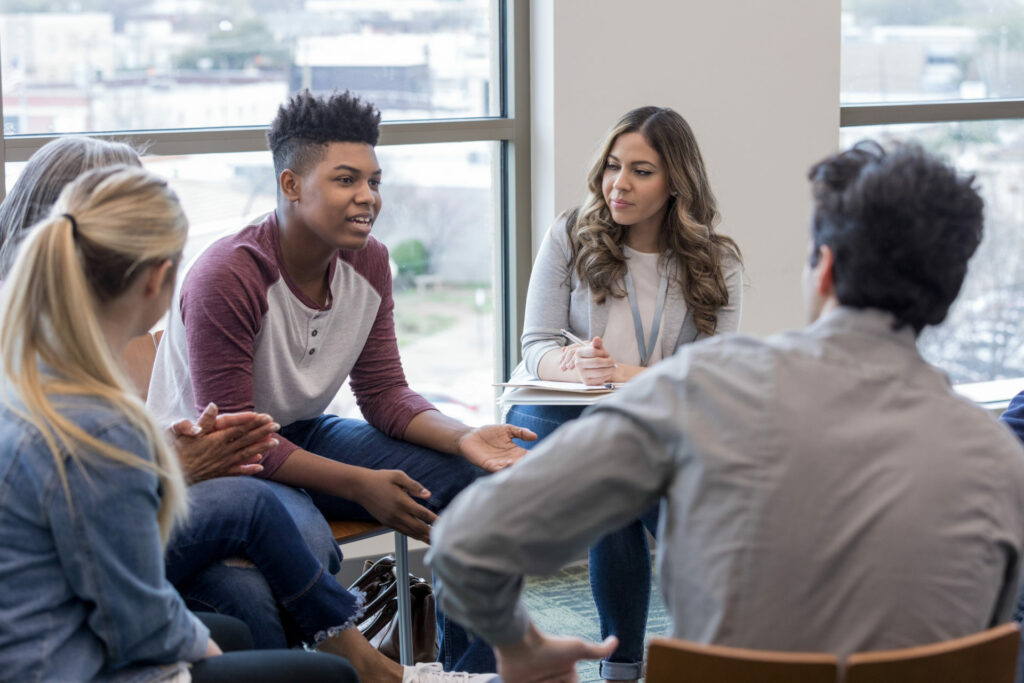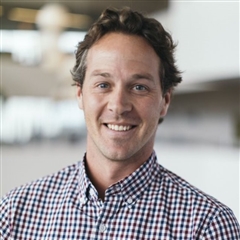It is only once the groundwork has been laid for authentic relationships that you can gain trust from your students. Trust that they are safe. Trust that they are welcome. Trust that they are respected and valued.
Joey Lee, Chief Learning Officer, LiFT Learning
In most classrooms, it is clear who is in charge, and age is often the deciding factor. However, Mr. Barry’s class was different. He was the oldest, that was certain, but the question remained if, in fact, he was in charge. Think more about Disney’s Epcot Center and less about high school Social Studies class. He was there if you needed directions or support, but in general, the space was yours to explore.
Only once you grew up did you realize everything was designed with purpose, and you were the purpose.
As a colleague, I would often observe his class and notice the apparent semi-laissez-faire form of government that ruled the day. Learners had voice and choice, and Mr. Barry was one voice among many. He was among the chorus, all the while magically conducting to tune for harmony. There was chaos but also order, business yet adventure, structure as well as freedom—all built on a foundation of mutual respect. He defined the art and science of teaching but did so with strategies that I had never encountered in my teacher preparation program.
I once asked him to recommend a book that would help me improve my practice. My classroom didn’t feel like his, and the relationships that I had with my students didn’t resemble the authenticity that I could feel when I walked into Mr. Barry’s room.
I was expecting research, he passed on a memoir.
In Teacher Man, Frank McCourt describes his pedagogical approach through which students take charge of their own learning. McCourt, more famous for Angela’s Ashes, writes in Teacher Man about his career as an NYC educator with over 30 years in the classroom. His approach was equal parts unconventional and impactful, as was Mr. Barry’s, and the parallels between the two were clear:
- Culture starts with relationships
- Trust is paramount
- Wisdom is knowledge through experience
While the classroom has certainly changed since Mr. Barrry’s retirement, these three pillars remain the same.
Why Relationships Matter
No one ever said teaching was easy. Between seemingly endless testing, demands from administration, and criticism from community members, it can feel like you’re doing everything in your power just to keep your head above water. Things like building relationships and fostering a growth mindset in the classroom might fade into the background. While such classroom culture indicators may not be easily quantifiable, their value cannot be overstated.
When I think back to high school, I don’t remember the dates of the first Persian invasion of Greece, but I sure do remember the way Mr. O’Reilly told the tale of Pheidippides’ run to Athens and how marathons came about. I couldn’t tell you the structure of my freshman year Geography class or the skills and competencies we covered, but I still make a conscious effort to apply what I actually learned there—to remove my cultural blinders and remember that things aren’t weird nor are they better or worse, they’re just different.
This is the value of relationships.
These lessons outside of the set curriculum came from teachers I respected and who respected me—ones with whom I had formed bonds. As one of my high school teachers said, we established “mutually respectful and honest relationships built on mutual effort.” I was attached to more than just the subject in their classes, and the results, true enduring understandings, were lessons that have stuck with me to adulthood.
Trust is the glue that bonds relationships between teachers and students.
Joey Lee, Chief Learning Officer, LiFT Learning
The Importance of Trust
Trust is the glue that bonds relationships between teachers and students. It is only once the groundwork has been laid for authentic relationships that you can gain trust from your students. Trust that they are safe. Trust that they are welcome. Trust that they are respected and valued.
A solution to consider may reside in what we know about psychological safety. Researcher Amy C. Edmonson described psychological safety in a 2016 New York Times article as “a sense of confidence that the team will not embarrass, reject or punish someone for speaking up. It describes a team climate characterized by interpersonal trust and mutual respect in which people are comfortable being themselves.’’
Fear is a powerful emotion and appears omnipresent in schools across the nation. I was afraid to let go of control when attempting to try out one of Mr. Barry’s role-playing simulation activities. It just didn’t feel right to me that nearly 30 sixteen year-old youth would be able to create an authentic representation of a social revolt rooted in economic disparity, cultural inequality, and corrupt government resulting in a democratic election in a week’s time. I was very wrong and couldn’t have been more proud. I was learning to trust.
I was more inclined to toe the line and follow the rules; stay close to comfort, and all will be well. My time with Mr. Barry fundamentally changed my understanding of teaching and learning.
Wisdom exists in each experience we have if we are brave enough to sit with the moment, even if that moment is unpleasant.
Joey Lee, Chief Learning Officer, LiFT Learning
Wisdom – the building blocks of Classroom Culture
Rod Stewart was onto something, “I wish that I knew what I know now when I was younger.”
Wisdom exists in each experience we have if we are brave enough to sit with the moment, even if that moment is unpleasant. As a young teacher, when a student told me that he didn’t respect me because I didn’t respect him—it hurt, and I didn’t understand. I’m not proud of my reaction, as it was non-existent. I had the experience but didn’t process the moment to identify the learning and certainly didn’t look for help. I was embarrassed. As I matured as an educator, I learned to handle challenging moments, to leverage my own past experience and those of others.
Honest introspection, learning through experience, and valuable mentorship allowed me to build a more inclusive learning environment. In the spirit of Design Thinking, you may wish to pose the following question to your Professional Learning Community: How might we channel our collective wisdom from past learnings to build culture in a learner-centered environment?
Here are a few recommended steps to get started.
First, take a look at your practice. Really look. How are your relationships? Does psychological safety exist? Have you created a culture where all team members benefit from the collective wisdom?
If so, tell your story. That’s your call to action. People need to hear it.
If not, be vulnerable and lean into those relationships where you feel psychological safety does exist and trust that your sharing will lead to collective wisdom.
Second, study up and try it out. Countless resources exist on relationship building, creating culture in a learning environment, and practicing vulnerability and trust in a learning setting. Here is a shortlist of simple practices to try and resources to review:
- Turn mistakes into learning moments. No one wants to admit their faults. Taking the chance to be vulnerable by sharing your own mishaps that led to newfound wisdom not only shows that you are human, it also models the idea that mistakes happen and we can all learn from them. Cailtin Krause, author of Mindful By Design, shared a few tips on embracing vulnerability with Edsurge. Check it out here.
- Work together to create expectations within your learning environment. Start the year with the question: what do you want our class to look like? Invite students to write down expectations they want to adhere to, as well as those they hold for their teacher. Work through all the results as a class to determine the top expectations and use these to guide your class throughout the year. This piece by Edutopia has a great resource, including strategies on co-constructing expectations for learning. The New York Times offers a great piece with ideas on building classroom culture in a remote setting.
- Take the last few minutes of class each day to talk to your students about life outside of the classroom. What are they doing this afternoon? Does their soccer team have a shot at the playoffs this year? Is there a band concert coming up? Actively get to know your students more every day, not just through icebreakers at the beginning of the year.
Last, most educators have a Mr. Barry in their story and their presence is what inspires many to become the Mr. Barry for their students. Reach out to your Mr. Barry and ask for a book recommendation.


